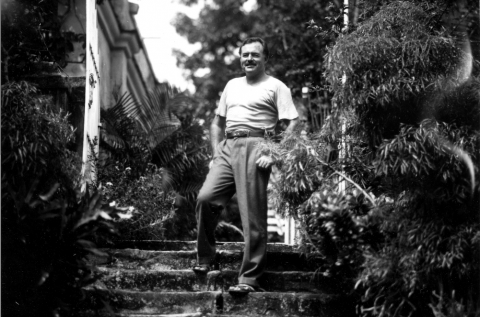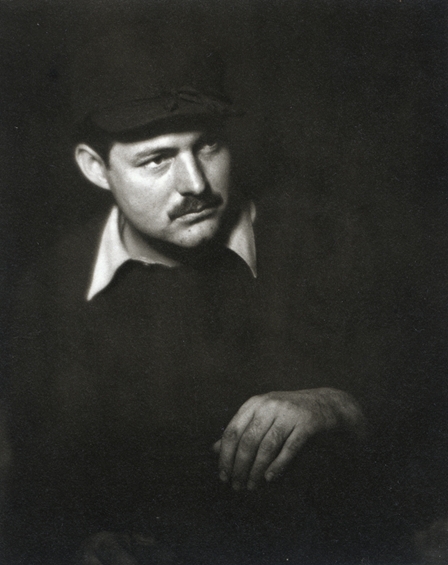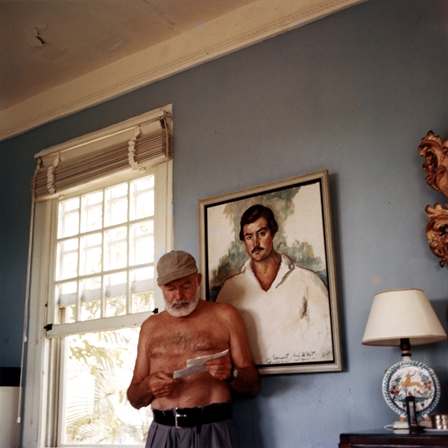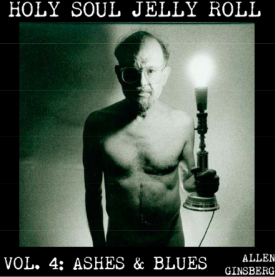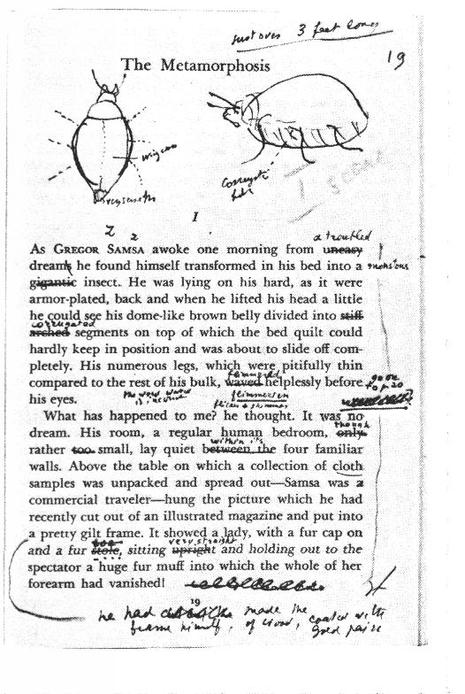When Steven Spielberg was six or seven years old his father took him to see Cecil B. DeMille’s The Greatest Show on Earth. When he arrived at the theater he felt cheated, because he thought he was going to see a real circus, with real-life clowns and elephants and lion tamers. But as the pictures moved across the screen the boy’s disappointment soon gave way to enchantment. One scene in particular–the film’s spectacular train wreck–would alter the course of his life.
After seeing the movie, Spielberg talked his dad into to buying him an electric train set. When he got a second train his boyish instinct was to re-create the crash scene from The Greatest Show on Earth. He rammed the two trains together at high speed, just for the joy of watching the pieces fly apart. His father was not amused. After paying a second time to have the trains repaired, he warned Steven that if he crashed them again, the train set would be taken away. When Spielberg was about 12 years old, he got an idea. As he later recalled:
Whatever got into me, I needed to see those trains crashing. But I also didn’t want to lose my train set. My dad had sitting around the house, which I had always taken for granted, this little eight millimeter Kodak film movie camera with a turret that had three lenses–kind of a wide, medium and close-up lens. I never really bothered with the camera, but I thought: Well, I know what I can do. What if I filmed the trains crashing into each other? I can just watch the film over and over and over again. And that’s how I made my first movie. All in the camera. I didn’t have an editing machine. I just put the camera low to the track, the way we as children like to put our eyes close to the toys we’re playing with, so the scale seems to be realistic. I filmed one train going left to right. I cut the camera, turned it around and filmed the other train coming right to left. And intuitively I figured out that if I put my camera in the middle and they met in the middle, I’d have my train wreck. And that’s what I did. Luckily the trains didn’t break. But I looked at that film over and over and over again, and then I thought: I wonder what else I could do with this camera?
Spielberg began making films obsessively. “I used to just crank them out, these little one-reelers, one after the other,” he told an audience at the American Film Institute in the 1970s. “They were just little dramatic exercises. It was a hobby and nothing more, although subconsciously I was beginning to take it seriously.” He began screening his films for kids in the neighborhood. One of his sisters would make popcorn and he would charge 25 cents for admission as a way to make money to buy more film. As time went on Spielberg learned film grammar and began splicing different pieces of film together. When he was 14 years old he enlisted a group of school friends to act in a 40-minute World War II movie called Escape to Nowhere. In the documentary clip above, Spielberg and his father, Arnold, remember the making of the movie.
Escape to Nowhere (fragment):
Spielberg filmed Escape to Nowhere in 1962 near his family’s home in Phoenix, Arizona. The Sonoran Desert scenery around Echo Canyon and Camelback Mountain stood in for North Africa, and about 20 to 30 of Spielberg’s friends and classmates played soldiers on both sides of the battle.
“He had a limited supply of German helmets,” writes Joseph McBride in Steven Spielberg: A Biography, “so he would have his soldiers run past the camera and pass their helmets to other kids, who then would dash around behind the camera and make their appearances.” None of the cast were old enough to drive a jeep, so his parents played those roles. In one scene, according to McBride, Spielberg’s mother, Leah Adler, pulled a helmet over her hair and played a German soldier.
“My special effects were great,” Spielberg said in 1980. “For shell explosions, I dug two holes in the ground and put a balancing board loaded with flour between them, then covered it with a bush. When a ‘soldier’ ran over it, the flour made a perfect geyser in the air. Matter of fact, it works better than the gunpowder used in movies today.” For some neighbors the scene was a bit too realistic. McBride quotes a former cast member describing the scene:
“The Highway Patrol came after us,” reports Haven Peters, who played one of the leading roles. “We were out in the desert, and some people drove by and reported to the state police that all these guys were trooping around in Nazi helmets and guns. Two or three cars of troopers came out to investigate. We thought, Are we all going to be arrested for trespassing? Somebody told them we were making a movie, and I remember Steve’s dad talking to them and cooling them off. After that they were really interested, and they hung around to watch.”
For his next juvenile epic, Spielberg ventured into the science fiction genre. The film, Firelight, was in many ways a trial run for his 1977 blockbuster, Close Encounters of the Third Kind.
Firelight (fragment):
Firelight had its origins in a Boy Scout camping trip that Spielberg missed out on. It was the only overnight scouting trip he had missed in a year, according to McBride, and when he caught up with his friends he was devastated when they told him they had seen something amazing and unexplainable at night while camping: “a blood-red orb rising up behind some sagebrush, shooting off into space.” As former patrol leader Bill Hoffman told McBride, “It wasn’t true at all. As far as I can tell, it was a complete fabrication.” Nevertheless, Spielberg had the idea for his next film, and he was better equipped this time. Here again is McBride:
The making of Firelight was made possible by the prizes Steve had won for Escape to Nowhere in the state amateur film contest. “He won a whole bunch of stuff,” his father recalls. “He won a 16mm Kodak movie camera. I said, ‘Steve, I can’t afford to spend money for film for 16mm. Let’s swap it for an 8mm, and we’ll get a good one.’ So we bought a real good Bolex-H8 Deluxe, the big camera that was built on a 16mm frame, but cut for 8mm, and so you could get 400-foot reels on it. It had telephoto lenses, single-frame motion, and slow-motion, so he could make all kinds of stuff with that. And he won a whole library of books relative to filmmaking. he loved those books, but he said, ‘I’m going to donate them to the school library. I don’t need them. I have the feel for it.’ As a gift for being that generous, I said, ‘OK, we’re going to up the ante.’ We bought a Bolex projector, and we also bought a sound system. It was the first sound system out for consumer use, a Bolex Sonorizer.”
The scenes in Firelight were shot in 1963 in various locations around Phoenix, including the Spielberg home. The actors dubbed their lines afterward. The movie is set in a fictional Arizona town, with a story that is in some ways similar to Close Encounters. It involves an unhappily married man obsessed with UFOs who tries to get skeptics to believe in him. As the story moves along, a squad of National Guardsmen, a dog, and a little girl played by Spielberg’s sister Nancy all get abducted by aliens. For special effects Spielberg built a papier-mâché mountain and used the multiple exposure feature on his new camera to superimpose the glowing “spaceships” over scenes. McBride offers his assessment of the film:
Firelight introduces the themes of supernatural intruders, suburban alienation and escape, broken families and abducted children, scientific adventure, and spiritual renewal that would become familiar in Spielberg’s mature work. The young couple on the run in Firelight also point toward the Richard Dreyfuss and Melinda Dillon characters in Close Encounters, and the earlier film’s UFO expert, Howard Richards, is an older, more fallible, less blissful version of François Truffaut’s Lacombe. But unlike Close Encounters, which radically departed from sci-fi movie tradition to depict its extraterrestrials as benign rather than menacing, Firelight derives in large part from the mood of anxiety and paranoia that characterized the genre in the 1950s, when Spielberg became hooked on sci-fi.
Spielberg premiered Firelight to a packed house of family, friends and curious local residents at the Phoenix Little Theatre on March 24, 1964, when he was 17 years old. The film made a profit of one dollar. “I counted the receipts that night,” Spielberg recalled, “and we charged a dollar a ticket. Five hundred people came to the movie and I think somebody probably paid two dollars, because we made one dollar profit that night, and that was it.”
The day after the screening, Spielberg moved to California with his father, who was splitting up with his mother. A few years later, when he was showing his film work around Hollywood, Spielberg left two of the original reels from Firelight with a producer as an example of his work. Alas, just a week or so later the production company went out of business and the producer disappeared with Spielberg’s reels. All that remains of Firelight are fragments, including the one above.
Related Content:
Terry Gilliam: The Difference Between Kubrick (Great Filmmaker) and Spielberg (Less So)
Steven Spielberg on the Genius of Stanley Kubrick
